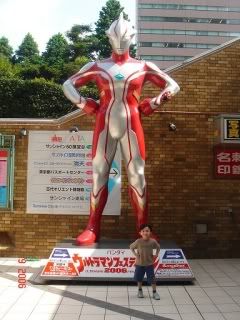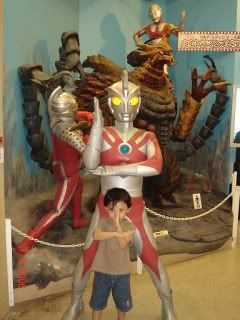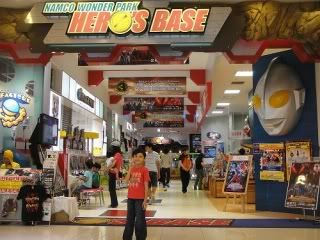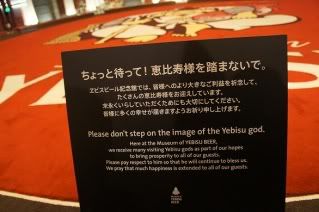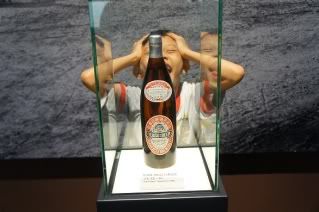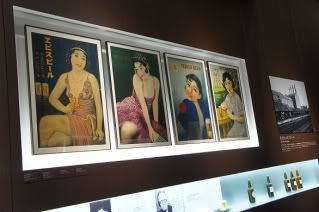 |
| Pagudpud Beach in the northernmost tip of Luzon, the largest island in the archipelago |
I am sipping a cocoa drink before breakfast at the open deck of the beach resort looking out to the South China Sea, our lovely cottage sitting next to an inviting pool. Bill and my daughter April, co-drivers on the exciting road trip to the Philippine North, are still trying to get renewed from yesterday's ordeal. We arrived at
Bauang, La Union at 10 PM the night before. We had traveled about 830 km witht 290 to go to our base in Makati, Philippines. This has been a trip not only of amazing churches but also of tropical beaches!
 |
| penitents preparing to carry their crosses |
We left in the wee hours of the morning of Holy Thursday, 2011 to avoid the morning surge of Catholic Philippines getting out of the city for annual pilgrimages cum getaways. The North Luzon Expressway now extends all the way to Tarlac City, Tarlac with the Subic-Clark Interchange Expressway but, not being familiar with this freeway, we exited too early into Dau, Pampanga whose streets were teeming with penitents in self-flagellation or chanting the ‘pabasa’ (Passion readings) for 48 straight hours.
 |
| Isdaan, the floating restaurant |
A wonderful breakfast awaited us at Isdaan in Gerona, Tarlac, a floating restaurant with all the familiar Filipino fare and international dishes with wandering musicians serenading customers in each group’s favorite genre, just at the exit to the old highway. At mid-afternoon we arrived in a World Heritage Site, Vigan, Ilocos Sur. It is the one place in the country, in fact Asia, where the 300 years of Spanish rule remains painted in the 17th century homes preserved as a Heritage Village, undamaged even by war.
 |
| the World Heritage Village at night in Vigan, Ilocos Sur |
 |
| St. Paul's Cathedral in Vigan |
Cordillera Inn was our home in the village. We walked alongside ‘kalesas’ that ferried tourists on the cobbled roads. The St. Paul’s Cathedral, another World Heritage Site built in 1641, had its floats (Stations of the Cross) ready for the Good Friday procession. On the opposite side of the plaza is the Vigan Empanadahan, a collection of stands that make the delicious deep-fried sausage, egg, and cabbage rolls. The Crisologo Museum, ancestral home of the town patriarchs, gave us a closer look at life in Vigan.
 |
| Paoay Church in Ilocos Norte |
Before reaching Laoag, we stopped by Paoay, Ilocos Norte where another World Heritage Site, the Paoay Church, built in 1594, still stands. This was the highlight of my trip for I was not aware that the Philippines had a structure like this. In serving as the political backbone of Spanish colonial rule, churches were subject to attacks by local revolts. Thus the baroque architecture has the appearance of a fortress, with the large imposing buttresses at the sides and the massive unrestored facade.
 |
| entrance to the Marcos Mausoleum |
We passed by the Malacanang (presidential palace) of the North on the shores of Paoay Lake, built by the Marcoses during their infamous rule. At the next town of Batac, Ilocos Norte we found the Marcos Mausoleum where the lavishly waxed body of Marcos still lies inside a large, stately, and gloomy tomb preserved in a vacuum-sealed glass coffin. A cluster of 3 houses complete the Marcos estate and more than 2 decades after the dictator was deposed by a People Power, he still draws a crowd.
 |
| St. William's Cathedral in Laoag, Ilocos Norte |
In Laoag, Ilocos Norte, St. William’s Cathedral and its Sinking Bell Tower, built in 1612, is another World Heritage Site known for its Italian Renaissance design and its Sinking Bell Tower, which sinks into the ground at a rate of an inch a year. Damaged by hurricanes in 1640, by earthquake in 1706, and by fire in 1843, the church was restored in 1880. The bell tower, however, is already undergoing demolition. To our delight the whole city spilled into the streets, carrying lighted candles for a Good Friday Procession.
 |
| and its sinking bell tower, undergoing demolition |
 |
| the Tobacco Monopoly Monument |
Too bad we could not capture all the scenes as the battery of our camera died. But we were able to take a picture of the Tobacco Monopoly Monument which stands right at the town plaza, just after the ‘Hollywood’ sign of the city, visible from the Marcos Bridge as one enters it. The monument was constructed when the Monopoly which began in 1781 was lifted in 1881. Those 100 years gave the Ilocanos untold miseries as they were obligated to plant tobacco solely for the Spanish government.
 |
| Laoag, Hollywood style |
 |
| the Bangui Wind Farm |
The road to
Pagudpud, Ilocos Norte is not as good with an unfinished kilometer of concrete road. But soon after this stretch we were in awe at the Bangui Wind Farm, 20 units of 70-meter high wind turbines with a total capacity of 33 mw, describing a graceful arch as they stretched on a single row along a 9-kilometer shoreline off Bangui Bay. Finally, we reached the northernmost tip of Luzon, the largest island of the archipelago we luxuriated on the white sands of Saud Beach.
 |
| fishermen awaiting their early morning catch |
We listened to the music of the ocean by day and relaxed to the music of the bands by night, feasting on local seafood and we lingered till after lunch the following day, thinking that the drive to Bauang would just be 4 hours (it was 8!). The night drive gave us priceless photos of fishermen waiting for their early catch in their bancas, glittering like fireflies on a still ocean below a crimson sky. Our road trip on the northwestern coast of Luzon not only gave us beach time but an amazing Visita Iglesia, a most fitting getaway during Holy Week in Catholic Philippines!
 |
| delicious Vigan empanadas |
Next: Enjoying Day Trips from Manila
 This is by the way, my second entry for this week's Show Me Japan Vol 1 Issue 23.
This is by the way, my second entry for this week's Show Me Japan Vol 1 Issue 23.



































